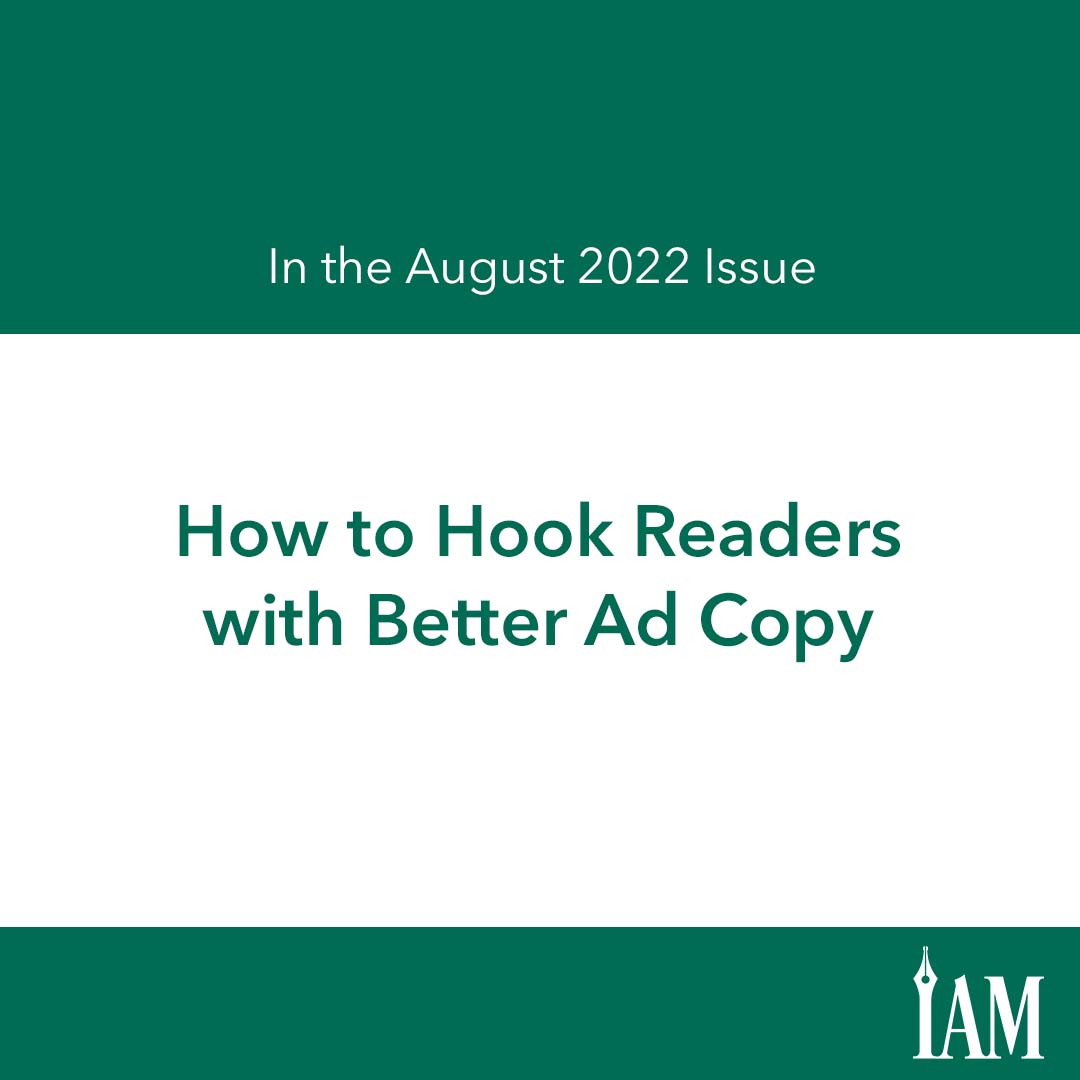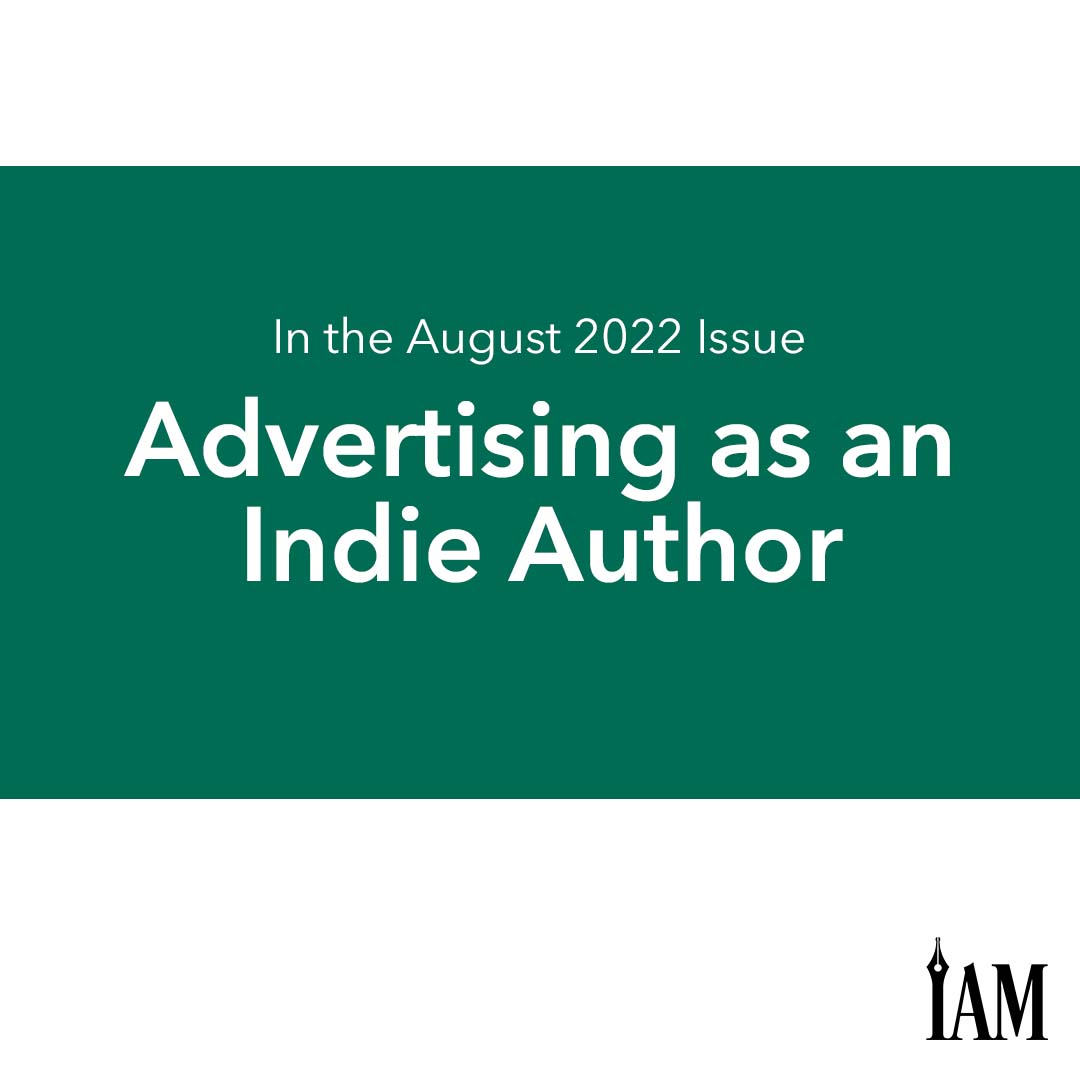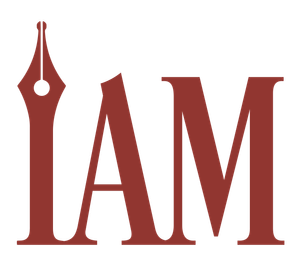How Many Ads Do We See A Day?
How many ads do we see a day? The answer is hard to calculate, but according to Forbes Magazine, studies suggest we see anywhere between four thousand and ten thousand ads per day. That’s not far-fetched. Back in 2015, a marketer by the name of Ron Marshall set out to test the stats by spending twenty-four hours counting all the ads he saw. He gave up after counting 487 ads before breakfast.
We’ve developed what’s known as “ad blindness,” so many of these exposures don’t even register. So when you’re the one doing the marketing, how do you catch the attention of readers with your ads?
You could go to the Facebook ads library and imitate what other authors are doing, such as putting excerpts in the body copy or leading with a review quote, but understanding key advertising concepts will stand you in far better stead.
Generally, there are five elements to an ad:
- The ad image
- The headline and subheading
- The hook or preview text
- The body copy
- The call to action (CTA)
Each has its job to do. The ad image is given the largest amount of space to grab the reader’s attention and stop them from scrolling away before they read the ad copy.
Because we’re trained to scroll and the image moves upward, typically the next part of the ad to catch the reader's attention is the headline and subheading. These get the reader to read the next line of the copy—the hook and the body copy.
BookBub only gives you a small square of ad real estate—a 300×250-pixel image that includes your ad copy—whereas Facebook gives you more wiggle room in terms of the length of the body copy. Headlines in Facebook ads can be up to forty characters, a link description or subhead text can be up to thirty characters, and the hook or primary text can be 125 characters before the reader has to click “read more.”
The same basic marketing concepts still apply with shorter ad opportunities, meaning they require just as much care and attention to detail as longer ads. In a BookBub ad, for example, there’s no room for lengthy body copy, so the headline and subheading form the hook.
But let’s take a closer look at the actual copy. Your first job is to understand the target audience for the ad. Just as you might speak differently on a first date compared with how you’d speak to a long-time friend, so too should you adjust your ad copy for different audiences.
The technical term for this is “market awareness.” This speaks to how familiar the readers are with you and your books. If you’re targeting people who are already familiar with your previous books, try to reel them in by focusing on your offer. This could mean crafting hooks based on novelty, such as a new book; scarcity, such as a limited edition; or price. However, if you’re targeting readers who’ve never heard of you, then building trust by providing insight from other readers—called social proof—could prove a more effective hook.
What are hooks, and how do you use them?
Think of a hook like an overarching theme of a book, such as honesty, trust, or injustice; everything you write is filtered through that lens. Hooks are a similar concept in that they’re the big, curiosity-provoking ideas that frame the copy, keep readers reading, and lead them further along in the buying journey. It’s important to remember that it’s not the job of your ad to sell the book—it only has to sell the click to get them a step closer to purchasing it.
Often, advertisers will use more than one hook. They aren’t mutually exclusive, so you can layer them to really grab attention. Let’s run through several hooks authors commonly use in their advertising and how you can use them too.
Social Proof Hooks
Social proof is essentially about building trust and credibility. We tend to look to our peers to see what they’re doing and use that as a kind of barometer for our own thoughts and behavior, so if potential readers see that other people trust you, then they are more likely to do so as well.
There are several different types of social proof. Book reviews and review quotes are some of the easiest and most obvious. However, including numbers in ad copy is another solid way to hook attention. Your ad could cite the number of Kindle Unlimited downloads your book has received, or if you’re reviving an old book from your backlist, you could give the total number of reviews people left.
If you’re going to use reviews in your ad copy, always look for specificity. For example, “a lovely, heartwarming insight into the life of an ‘ordinary’ woman” is a much better review quote than just “a wonderful read.”
Comparison Hooks
Comparison hooks in advertising tend to focus on highlighting differences. However, they are also useful if you are a newer author or trying to tap into a new audience because they allow you to leverage the familiarity of a more well-known author. Highlight similarities between your work and another author’s with phrasing such as “If you like …, then you’ll love …” or “This book has all the fun of X and all the danger of Y” to entice potential readers to your work—just make sure your target audience is familiar with the comparison author you choose.
Emotional Hooks
Although much of what you're aiming for should evoke a sense of curiosity, that alone may not be enough. All great advertising should contain some element of an emotional hook, but not all emotions are created equal in advertising terms. The most potent emotions create an arousal response. Excitement and anger are more physically arousing than sadness, so use excerpts from emotional scenes that lead to curiosity, and you’ll be on your way to a winning ad.
Novelty Hooks
Humans crave novelty, and your new book is the ticket to creating a curiosity gap that warrants further investigation. To use this hook effectively, you need to consider your target audience. People who’ve already read and liked your previous work will need less convincing than those who’ve never heard of you before—in which case, you’ll need to layer in a few more hooks to get them to want to fill the curiosity gap and click your link.
Demonstration Hooks
We see demonstration hooks in use all the time, though we might not realize it. Ikea sets up showrooms to demonstrate how you can style a room with their products. Back in 2010, Blendtec used the demonstration hook in a series of YouTube videos called “Will it blend?”, which has more than 292 million views to date.
Nick Kolenda explains in his book, Imagine Reading This, that before we make a decision, we imagine the outcome. Video marketing enables us to create more vivid mental pictures compared with text alone, and when people can see a product in use, they are better able to imagine themselves using it—or in the case of books, reading it. If you’ve ever wondered, this is one reason TikTok page flips are effective when selling books.
Remember that people aren’t scrolling through social media looking to buy your book. In order to interrupt their day, you need to try and enter the conversation in their minds.
Although it would be lovely to set an ad and forget it so we can focus on writing the next book, sadly, we can’t. Ads are a constant work in progress. They fatigue—thanks, novelty hook. But by having a grasp on the various hooks you can use in your ad copy and understanding your target audience, you can always come up with new angles and new ad copy to test.
Angela Archer







